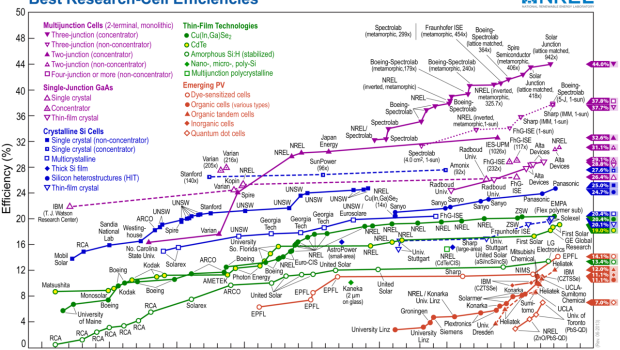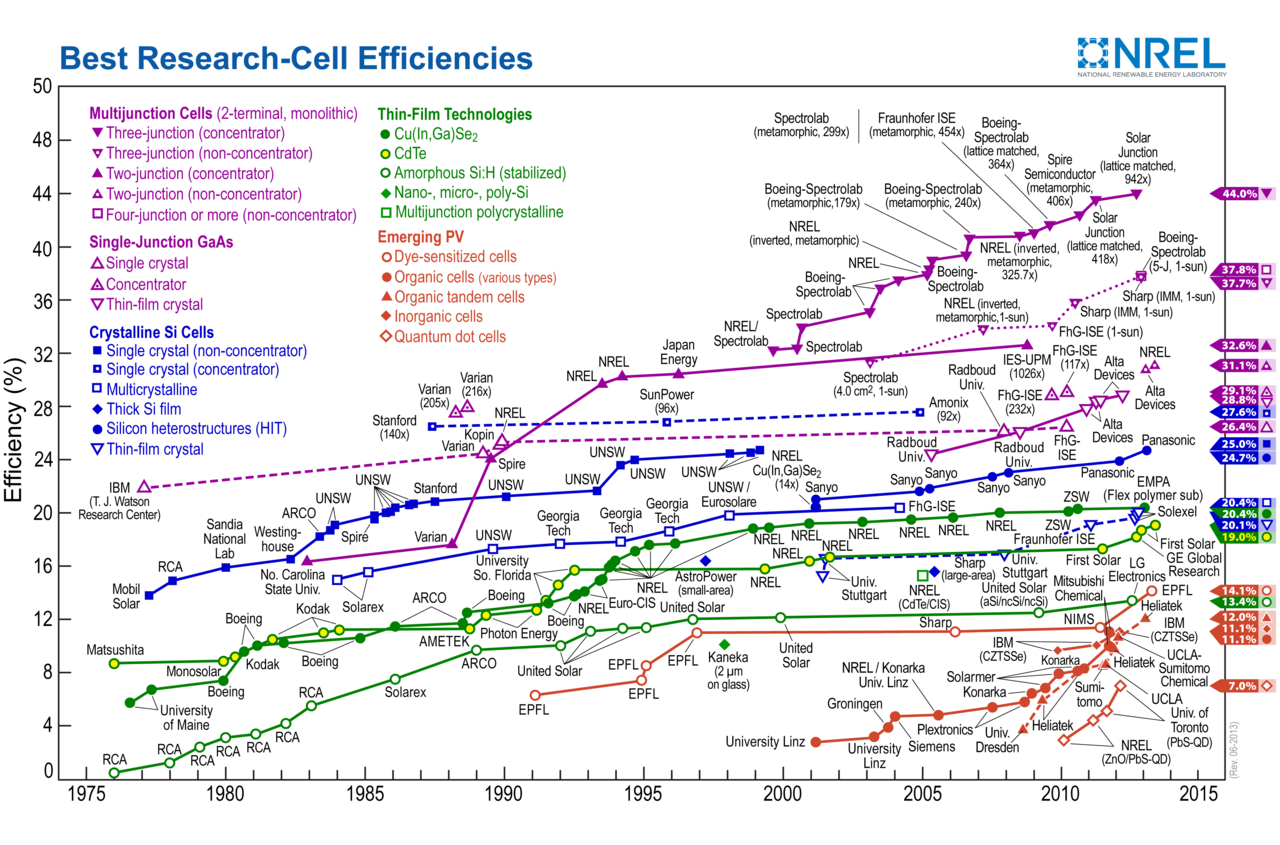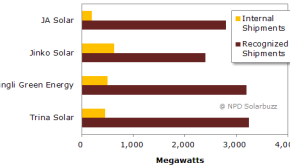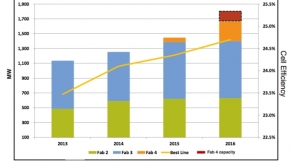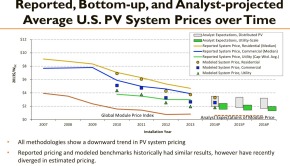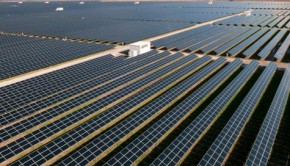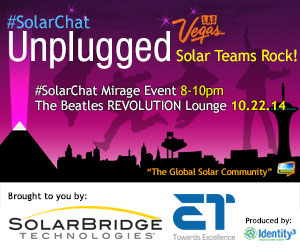Which Solar Panels Are Most Efficient?
February 2nd, 2014 by Zachary Shahan
Originally published on Cost Of Solar.
One of the most common things people ask when they start to consider going solar or start to plan their life-changing solar expedition is which are the most efficient solar panels. However, first of all, that’s not even the right question for most people, and second of all, the literal answer to that question really isn’t relevant for the average consumer. Let me explain….
First of all, the important matter is not which solar panels are most efficient, but which solar panels are the best value for the money. If you’ve got space for 10 solar panels on your roof and you have an option between solar panels “ABEfficient” that are a bit more efficient but twice the price of solar panels “CDCheap,” chances are, you are going to make a much bigger savings by going with CDCheap. Of course, the important thing would be to see what’s available in your situation and simply run the numbers (or, if you are allergic to math, have a friend who can do math run the numbers for you).
But, anyway, if you really want to know which are the most efficient solar panels (or solar cells) out there, I actually happened to be putting together a list of solar records recently and can give you the rundown. But, as I do so, I’ll drop in a few key notes making the point above a bit clearer. Before looking at solar panels as a whole, let’s have a quick look at the producers of some of the most efficient solar cells (the key component of solar panels) and their efficiency records:
- 44.7% efficient solar cells by Fraunhofer. Notably, these world-leading solar cells from Fraunhofer are in the concentrator triple-junction solar cell category. Such solar cells are complicated and are not used in residential or commercial applications… because they are bloody expensive. They are used in space applications by the likes of NASA, where a bit of extra space (or, as it may be, less space via extra efficiency) can make a huge difference.
- 37.9% efficient solar cells by Sharp. Just a step down, these are in the triple-junction, non-concentrator solar cell category. If this is all new to you, it might take you awhile to see the difference in the categories. The difference is that these solar cells don’t use anything to concentrate the light hitting the solar cells, while the 44.7% efficiency cells above do use something to concentrate the light (of course, adding to their costs).
- 32.6% solar cells by a Spanish solar research institute (IES) and university (UPM). These are another step down, as they are in the two-junction, concentrator solar cell category. (For an intro on “junctions,” by the way, check out this multi-junction photovoltaic cell article on Wikipedia.) Again, these are still far different solar cells from what are used in commercial or residential installations.
- There are about a dozen or so extra categories that I could run down. Some categories have very high efficiencies but the solar cells are quite expensive, while others are actually on the other end of the spectrum (no pun intended) and are very cheap but have very low efficiency. Of course, some are both inefficient and expensive, but apparently worth researching nonetheless. The key, as I noted earlier, is finding the best balance between cost and efficiency.
Now, there’s less research on solar panels than on solar cells because the core of the technology is the solar cell, so that’s what researchers at many institutes and universities spend their time on. No one is even going to try to manufacture a solar panel that won’t sell because it isn’t made of marketable solar cells. Still, there are many different types of solar panels (more accurately known as solar modules) on the market and many, many manufacturers of some of the most common types. So let’s look at the leaders in this category.
Why didn’t I start with the solar modules? Because then it would be easier to miss the point, which is that solar panel efficiency is not the metric you use to choose solar panels for you home. Levelized cost or IRR would be a better figure to focus on.
Getting on to the solar modules, here are the most efficient solar modules in a few key categories:
- 36% efficient Amonix solar modules hold the overall solar PV module efficiency record. However, these are made with concentrator solar cells and are not used in residential applications.
- 21.5% SunPower solar modules hold the commercial solar module efficiency record. SunPower’s SPR-327NE-WHT-D modules are also the leading solar modules in solar module yield field tests, and other SunPower solar modules come in #2 and #3 in those tests. (For those of you to who this matters or is interesting, SunPower is a US-based solar panel company.)
- 17.4% Q-Cells thin-film solar modules hold the record in this specific solar panel category. Thin-film solar panels are widely used, but not in residential applications. (Q-Cells was a German company, but it filed for insolvency in 2012 and was then acquired by the Korean company Hanwha.)
- 17% First Solar thin-film solar modules claim the cadmium-telluride (CdTe) photovoltaic (PV) module conversion efficiency record. Again, these are generally not used for residential applications, but I think including them helps to reinforce my key point yet again. (First Solar, a US-based company, was actually the #1 solar developer and the #2 solar module manufacturer in the world last year. Despite a relatively low 16.1% record efficiency in this solar panels category at the time, First Solar does very well with these relatively cheap solar modules in certain applications.)
- Just as one final example in order to show that the variation doesn’t stop there, 15.5% solar modules from MiaSolé hold the flexible PV solar module efficiency record. Naturally, in some applications, one doesn’t just need solar panels, one needs flexiblesolar panels. But, that probably isn’t you….
The takeaway point is:
Skip the focus on hypotheticals and irrelevant superlatives. Forget about what the “most efficient solar panels” are. Check on the solar installers in your area (you can get connected to them via our home page). See what they quote you. Ask them what solar panels they would use if you want to know. And compare your options to your heart’s content. Don’t go trying to find solar panels that were designed for NASA satellites.
By the way, the following chart from NREL isn’t fully up to date (solar efficiency records are broken quite frequently), but it gives you a good sense of the large variety of solar technologies:
Keep up to date with all the hottest cleantech news by subscribing to our (free) cleantech newsletter, or keep an eye on sector-specific news by getting our (also free) solar energy newsletter, electric vehicle newsletter, or wind energy newsletter.
-
Robert Reed
-
Bob_Wallace
-
-
http://captainjack.ws Captain Jack
-
stillfiguringitout
-
David Kwong
-
stillfiguringitout
-
-
-
buellwinkle
-
Bob_Wallace
-
-
Joselito
-
Bob_Wallace
-
-
Mathiaslink
-
Ian Smith
-
John Dough
-
Bob_Wallace
-
-
beelite
-
OnlyMe999
-
-
Sadia Sheikh
-
Bob_Wallace
-
http://sroeco.com/solar SRoeCo Solar
-
-
-
AF Din
-
Bob_Wallace
-
AF Din
-
Jola
-
Bob_Wallace
-
-
-
-
http://sroeco.com/solar SRoeCo Solar
-
Evert VaVaVanVliet
-
-
Gunawan
-
joe
-
-
deepa
-
C Brighton
-
Bob_Wallace
-
Matthew_Thompson
-
-
South Jersey Solar
-
SolarPod
-
JamesWimberley
-
SolarPod
-
JDL51
-
-
-
-
ronwint
-
A3Usolutions
-
Joe
-
george
-
-
BV
-
http://zacharyshahan.com/ Zachary Shahan
-
Kyle Field
-
-
Sean
-
http://zacharyshahan.com/ Zachary Shahan
-
-
JamesWimberley
-
http://sroeco.com/solar SRoeCo Solar
-
Jeffrey Simmons
-
-
Lindsay Wilson
-
http://zacharyshahan.com/ Zachary Shahan
-
val
-
-
Omega Centauri
-
Troy Frank
-
Matt
-
http://zacharyshahan.com/ Zachary Shahan
-
Folatt
-
-
Bob_Wallace
-
http://zacharyshahan.com/ Zachary Shahan
-
Kyle Field
-
-


